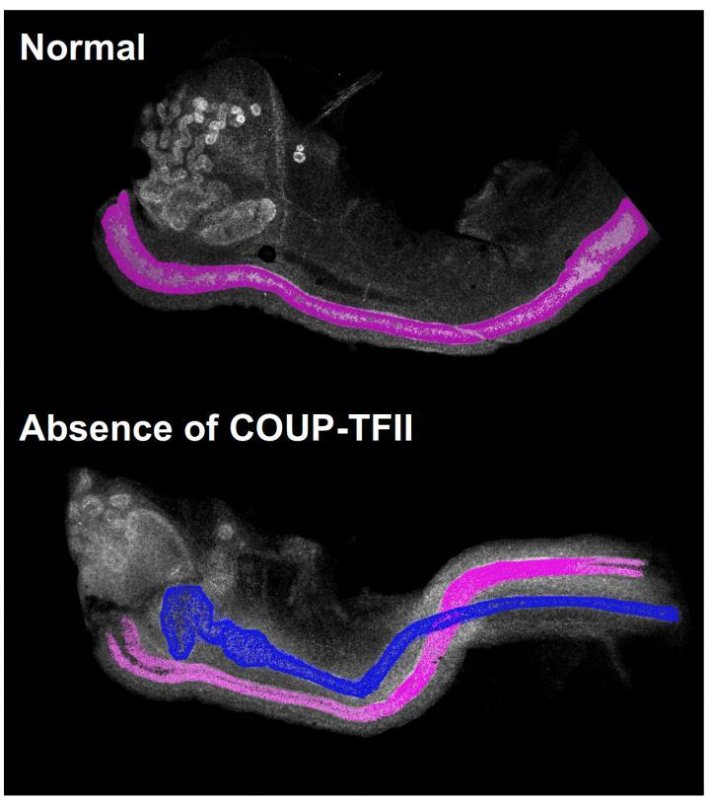The normal female mouse embryo contains only the female reproductive tract, highlighted in pink. The female mouse embryo without COUP-TFII has both male, in blue, and female reproductive tracts. Photo courtesy NIEHS
Aug. 17 (UPI) -- A new study has identified a specific protein known as COUP-TFII that determines whether a mouse embryo develops a male reproductive system.
Researchers from the National Institutes of Health and Baylor College of Medicine in Houston analyzed how male and female mouse embryos gain their sex-specific reproductive systems. The findings challenge the long-standing belief that an embryo will automatically become female unless androgens, or male hormones within the embryo, make it male.
Scientists since the 1950s have believed that androgens produced by embryonic testes promote the survival of the male reproductive tract, and that females result from the absence of androgens in female embryos and the breakdown of the male reproductive tract.
Every early-stage mammalian embryo contain structures for both male and female reproductive tracts, regardless of their sex at birth, and the reproductive tract of one sex is disintegrated so the resulting birth is the other sex.
"I learned in graduate school that androgens are needed to maintain the male reproductive tract, but our work finds that maintenance of the male reproductive tract can be achieved without androgen," Humphrey Hung-Chang Yao, head of the Reproductive Developmental Biology Group at the National Institute of Environmental Health Sciences, or NIEHS, said in a press release.
The new findings, published today in Science, showed that female embryos actively promote the elimination of the male tract by activation of COUP-TFII.
In the study, female mouse embryos created by the researchers without COUP-TFII showed both male and female ducts. Female mice with COUP-TFII only had female ducts.
The findings show that COUP-TFII has to be present to block the growth of male reproductive tracts, and that without COUP-TFII mice are born intersex with both male and female tracts.
The study could have implications for the study of disorders of sexual development, or DSD.
"Individuals with DSD may have developmental challenges due to the presence of intersex organ systems," said Kenneth Korach, head of the NIEHS Reproductive and Developmental Biology Laboratory. "With its highly novel approach and unexpected findings, Yao's research has important implications for understanding the potential causes of these conditions."















